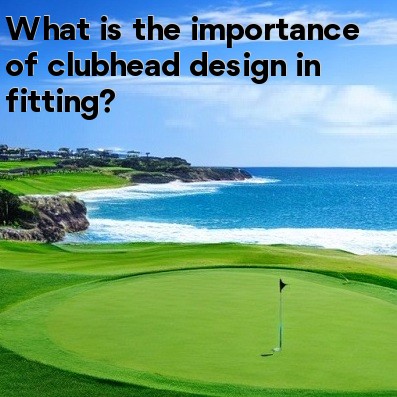
In golf, the importance of clubhead design in fitting
Golf, often regarded as a game of precision and strategy, requires players to utilize various tools and techniques to excel on the course. Among these tools, golf clubs play a crucial role in achieving accuracy, distance, and control. While the entire golf club contributes to overall performance, the clubhead design, in particular, holds significant importance in fitting.
When it comes to club fitting, every golfer has different requirements based on their skill level, swing characteristics, and personal preferences. The clubhead design plays a vital role in catering to these individual needs. Here are a few reasons why clubhead design is essential in fitting:
- The clubhead's shape and size significantly impact the club's center of gravity (CG). The CG position affects the ball's launch angle, spin rate, and distance. For instance, a low CG promotes a higher launch and greater forgiveness, making it suitable for beginners or golfers with slower swing speeds. On the other hand, a higher CG may benefit experienced players by allowing them to control the trajectory more precisely.
- The design of the clubhead also influences the moment of inertia (MOI), which measures the clubhead's resistance to twisting during the swing. Higher MOI leads to greater forgiveness and improved distance on off-center hits. In fitting, the clubhead's MOI is crucial as it helps match the club's stability with the golfer's swing tendencies. Players who tend to miss the sweet spot frequently may benefit from a clubhead with a higher MOI to maintain consistency in their shots.
- The material used in clubhead construction affects factors like feel, sound, durability, and performance. Traditionally, golf clubheads were made from forged steel, which provided a solid feel and enhanced feedback. However, advancements in technology led to the emergence of materials like titanium and composite materials, such as carbon fiber, which offer improved strength-to-weight ratios. These materials allow manufacturers to optimize clubhead designs for higher swing speeds, increased distance, and enhanced playability.
- Clubhead design also influences the club's overall appearance at address, thereby boosting confidence and aiding alignment. Golfers often have personal preferences regarding clubhead shape, color, and alignment aids. Certain designs can instill a sense of confidence in a player, leading to better swing performance and overall results.
A vital aspect of club fitting is finding the right combination of clubhead design features that align with an individual's swing characteristics and desired performance goals. Professional club fitters utilize launch monitor data, along with their expertise, to analyze factors like ball flight, spin rates, shot dispersion, and impact dynamics to recommend the best clubhead design options.
Ultimately, clubhead design has a substantial impact on a golfer's overall game. The right clubhead design can maximize performance, improve consistency, and boost confidence. Therefore, when undergoing a fitting session, paying attention to clubhead design features can significantly enhance one's golfing experience.





